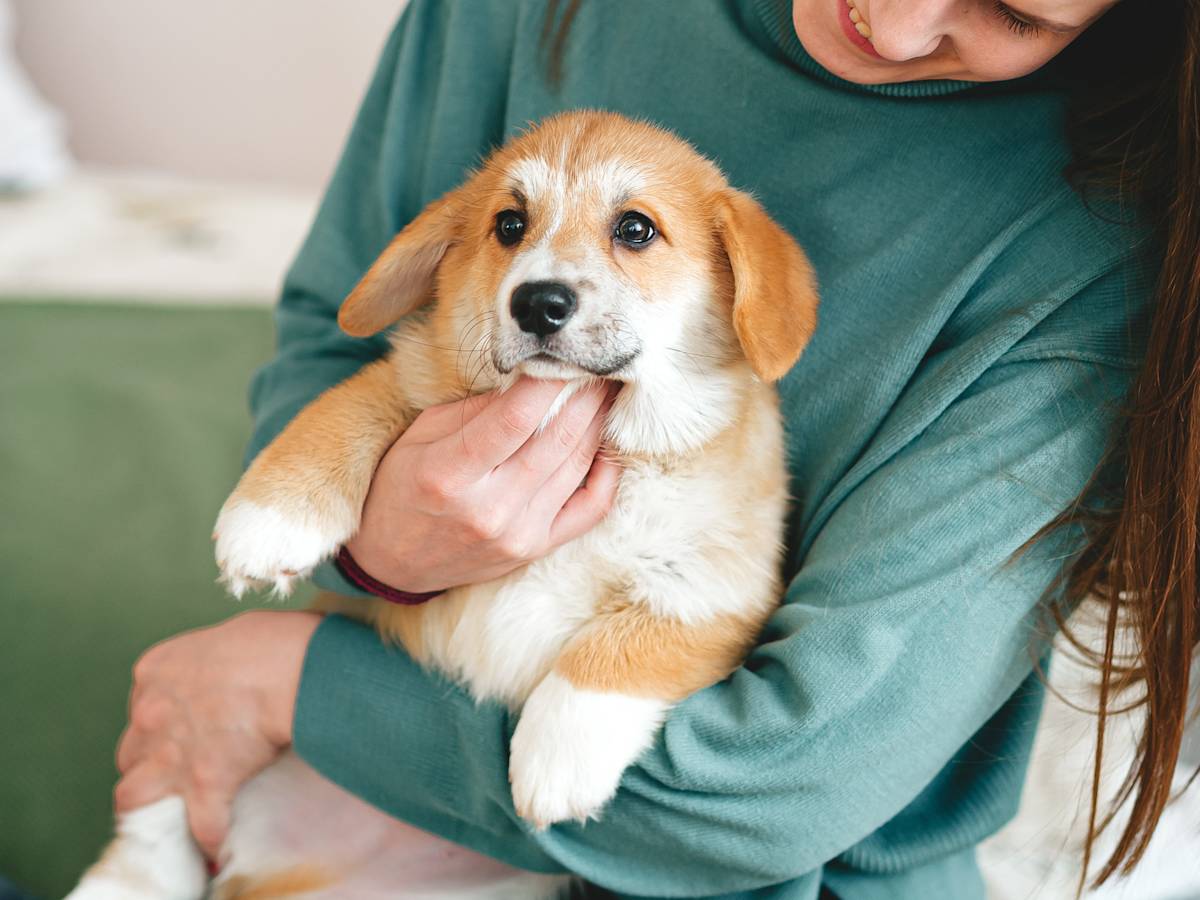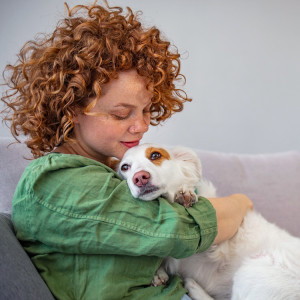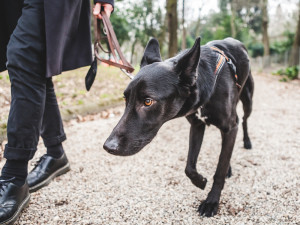How to Get Your Dog to Swallow a Pill
Vet-approved techniques to make it go down easy.

Share Article
In This Article:
Why Do Some Dogs Have a Hard Time Swallowing Pills? Methods to Help Your Dog Swallow Their Pill When to Seek Veterinary Advice The Best Way to Open Your Dog’s Mouth for a Pill What Do Vets Typically Do to Give Dogs Pills?
Most dogs will eat anything, no questions asked or sniffs taken. They’ll eat anything, that is, until you try to give them a pill. Then they scrutinize and painstakingly taste every nibble of the treat you try to hide it in. There must be a better way.
As a veterinarian, a big part of my job is prescribing medications to dogs in the form of pills, but I won’t leave you hanging. If you find yourself needing to give your dog a single dose of Benedryl or a lifelong medication for anxiety, here are some methods to get your dog to take their pills.

Why do some dogs have a hard time swallowing pills?
For an animal who will try to eat pretty much anything — couch cushions, socks, spiders — dogs sure are picky when it comes to swallowing medication. Dogs are smart enough to know when something’s up.
Perhaps they have had pills before that literally left a bad taste in their mouths, or maybe they don’t like the texture or size. Whichever it is, some dogs just don’t like to take pills, and they don’t like to be duped either, so you may have a harder time giving some dogs pills.
Methods to help your dog swallow a pill
If your dog won’t willingly take the pill from your hand (and keep in mind that very few will), here are some methods you can try to get the pill into their body.
Hide it in food.
If ever there was a time to slip your pup some table scraps, this is it. The trick is to use human food as the Trojan horse: Bury the pill inside a bite of a tasty treat that they’re not used to getting, and treat it as a treat. Make them do tricks or follow some obedience commands as they normally would, so that they don’t associate this treat with medication. Potential foods to use include:
Scrambled egg patty
Warm or chilled peanut butter sandwich squares
Chilled peanut butter balls
Butter balls
Chilled cream cheese balls
Cut pieces of hot dog
Soft-cooked pasta
Small pieces of chicken and beef
Melted cheese on toast
The key is that you don’t want your dog to have to chew in order to swallow, since they might bite into the medication and associate the food with a bad taste and/or spit it out. So, stick to small treats that they’ll swallow whole — they’ll be none the wiser.
If your dog’s medication is in a capsule, consider breaking it apart and mixing the contents in with a little canned food.
Use a pill pocket.
Pill pockets are soft dog treats with a hollowed center to hide your pet’s medicine in (genius, right?). Several brands make them, so you’ll just want to find a flavor your pet is especially fond of. Pill pastes are another popular method, which, like the name implies, is a super-flavored paste (rather than a solid treat) that envelops your pup’s medication.
Include a treat with their medication.
If you use treats for training, dogs know they get one when they complete a specific task. For some dogs, that’s enough: They will eat the medication to get the treat. Other dogs may need a little more coaxing, so try giving them a treat, giving them the medication, and then giving them another treat. Think of this as a treat sandwich, if you will.
You may also try this with three different pill pockets or foods from above. Just slip the medication into one of the treats (as kind of a roulette game), as you get your dog to eat all three.
Give them meds before mealtime.
Getting your dog when they’re at their hungriest might be a successful approach as well. Try giving them the medications, with a treat or without, right before a meal. This may not only be a little more enticing, but can also teach them that they need to take the pill before they get their dinner.
Look for another form of medication (liquid or chewable).
The field of veterinary pharmaceuticals has quickly learned that most pets don’t like to take their pills, so they’ve come up with tastier versions to make the process a bit easier. If your pup simply won’t take their pills, ask your veterinarian about a liquid, powder, or flavored chewable alternative. Liquids and powders are often more easily mixed with food, and flavored chewables can make medication time a treat. Many common dog medications, such as anti-inflammatories and pain pills, already come in alternative forms.
Put it in their mouth.
This is definitely the quick-and-dirty version, and maybe the one you’re least willing to try. Your dog’s safety should come first, so if you’re uncomfortable with this method, have your veterinarian give you a hands-on lesson. Otherwise, gently pry your dog’s lower jaw down and place the pill clearly in the back of their throat. Quickly remove your hand, close their mouth, and gently massage the throat. Give them lots of praise and affection for a job well done.
When to seek veterinary advice
If you’re having trouble giving your dog their medication, whether it be for diarrhea, an upset stomach, or something else, talk to your vet. The sooner the better. That medication was prescribed to them for a reason, and if they’re not taking their pill, they’re not getting the medicine that will help them get better.
What’s the best way to open your dog’s mouth for a pill?
Opening a dog’s mouth can be a little unnerving, so try to enlist the help of others to hold your pup, if necessary. From there, using one hand, hold the upper jaw by placing your hand over it with the thumb on one side and the fingers on the other. You can then gently pry the lower jaw down using the middle finger of your other hand.
What do vets typically do to give dogs pills?
Most vets will first attempt to give a dog a pill using a pill pocket, but there comes a time when the job just needs to get done. In these cases, they will open the mouth as described above, while holding the pill between their thumb and index finger of the hand, prying open the lower jaw. When the mouth is open, they will quickly slip the pill as far down the throat as they can. From there, they let your dog close their mouth and gently massage the throat to encourage swallowing. Sound like a lot? Talk to your vet so they can show you how to do this.
Bottom line
Most pet parents find that, at one time or another, they need to give their dog a pill, something their dog typically isn’t interested in.
When a dog simply won’t take their medication, you’ll need to get creative by hiding a pill in a tasty treat, having them take the pill before they get a treat or meal, or by simply popping it down their throat.
If you’re having trouble getting your dog to swallow their pills, take them to your vet.

Dr. Chyrle Bonk, DVM
Dr. Chyrle Bonk has been a mixed-animal veterinarian since 2010, with a special interest in rehabilitation. When she's not practicing or writing about veterinary medicine, you may find her exploring the outdoors with her family or tending to her cows, horses, chickens, or cats and dogs.

Colleen Stinchcombe
Colleen Stinchcombe lives near Seattle, WA, where she works as a writer, editor, and content strategist. Her two rescue pups wish she were a professional ball-thrower.
Related articles
![French bulldog puppy looking scared at vet]()
10 Things to Ask at Your First Vet Visit
There are no stupid questions — well, when it comes to your dog’s health.
Are Dogs Actually Stubborn?
“Labeling a dog as stubborn is often an easy way to shift the blame from a problem with the relationship to a problem with the dog.”
Does Your Dog Need Anti-Anxiety Meds?
How to cope with dog anxiety—from training to medication.
![Shy black dog walking with owner at the park.]()
How to Help an Anxious Dog Conquer Their Fears
Pro tips for boosting the confidence of a scaredy-cat dog.






